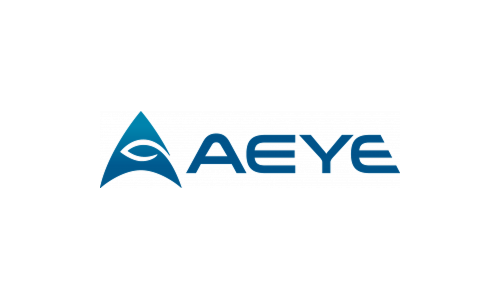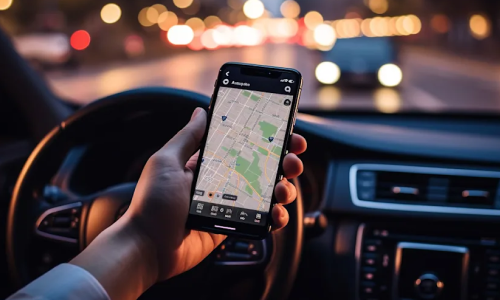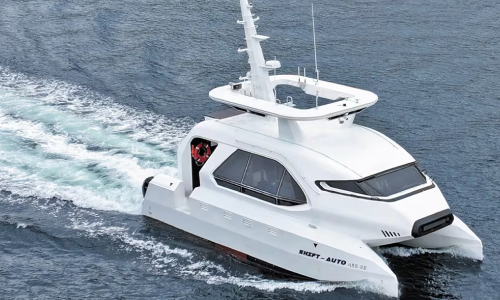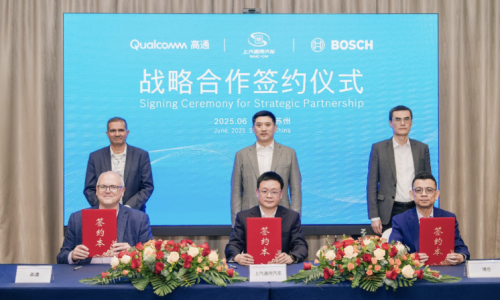
Vueron Newsletter
No. 223
2025.07.22
| LiDAR | Hesai’s ATX Lidar obtains ISO 26262 functional safety certification | |
| LiDAR | AEye | AEye’s Apollo sensor selected by major OEM unlocking potential $30M revenue opportunity |
| Autonomous driving | Uber, Waymo | Uber and Waymo launch autonomous ride-hailing in Atlanta |
| LiDAR | Samsung Heavy Industries | Samsung Heavy Industries’ SHIFT-Auto ushers in era of autonomous ships |
| ADAS | SAIC-GM, Bosch, Qualcomm | SAIC-GM, Bosch, Qualcomm to co-develop AI-powered cockpit experience for next-generation vehicles |
1. Hesai’s ATX Lidar obtains ISO 26262 functional safety certification
-
Hesai Technology’s ATX lidar received ISO 26262 ASIL B certification from SGS-TÜV, enabling large-scale ADAS deployment with enhanced functional safety.
-
ATX joins Hesai’s other ISO 26262 certified lidar products—Pandar128, QT128, and AT128—strengthening their “Safety Triad” system integrating functional safety, SOTIF, and cybersecurity.
-
ISO 26262 certification ensures rigorous safety management across vehicle electrical and electronic systems, reducing recalls and enhancing passenger protection.
-
SGS-TÜV involved early in ATX’s design, confirming Hesai’s commitment to safety and tech excellence upon certification in June 2025.
-
Since launch in April 2024, ATX gained adoption by 12 major OEMs and exceeded 40,000 units delivered as of mass production start in March 2025.
-
Lidar’s role in advanced safety and ADAS grows, with 25% of EVs over $20,000 equipped with lidar, highlighting increasing market penetration.
-
Reliable lidar performance is critical for complex driving scenarios, driving OEM focus and updates in safety standards.
-
Hesai’s ISO certification for ATX underscores its unwavering dedication to safety and plans to further advance safety capabilities and standards adoption.

Hesai’s ATX lidar earns ISO 26262 ASIL B certification, reinforcing its leadership in safe, high-performance lidar for ADAS and autonomous driving.
2. AEye’s Apollo sensor selected by major OEM unlocking potential $30M revenue opportunity
-
AEye’s Apollo lidar has been chosen by a major transportation OEM, with a projected revenue impact of over $30 million in the next 24–36 months.
-
Apollo lidar was selected for its industry-leading one-kilometer object detection range, which enhances hazard identification and response times.
-
This selection highlights the increasing demand for long-range lidar in transportation safety systems.
-
AEye’s technology supports the evolution of autonomous driving by enabling perception capabilities far beyond the typical 200-meter range.
-
The deal reinforces lidar’s role as a core sensor in ADAS and autonomous vehicle platforms requiring extended-range object detection.
-
Apollo’s performance sets a new benchmark for high-resolution, long-distance sensing in commercial transport applications.
-
The partnership reflects growing OEM investment in intelligent safety systems powered by advanced lidar technologies.
-
AEye positions this win as validation of its leadership in adaptive, high-performance lidar for next-generation mobility solutions.

AEye’s Apollo lidar secures a major OEM deal, reinforcing its leadership in long-range sensing for next-gen autonomous and ADAS systems.
3. Uber and Waymo launch autonomous ride-hailing in Atlanta
-
Uber has officially launched autonomous ride-hailing services in Atlanta in partnership with Waymo, expanding their self-driving initiative.
-
The service now allows Uber users to book Waymo’s autonomous vehicles via the Uber app across a 65-square-mile area in Atlanta.
-
This rollout follows their original partnership announcement in September 2024 and builds on previous deployment in Austin, Texas.
-
Approximately 100 Waymo vehicles are already operating through Uber’s platform in Austin, creating momentum in self-driving deployments.
-
Uber exited its in-house autonomous vehicle development by selling its AV unit in 2020 to focus on core operations like ride-hailing and delivery.
-
The launch aligns with industry trends following Tesla’s robotaxi trials and signals Uber’s renewed role in autonomous mobility via strategic partnerships.

Uber and Waymo have launched autonomous ride-hailing in Atlanta, strengthening their collaboration and advancing commercial self-driving services in urban mobility.
4. Samsung Heavy Industries’ SHIFT-Auto ushers in era of autonomous ships
-
Samsung Heavy Industries (SHI) unveiled SHIFT-Auto, a 12-meter unmanned autonomous vessel controlled by Samsung Electronics’ AI voice assistant, Bixby.
-
The vessel autonomously navigates by calculating optimal routes, avoiding obstacles, and responding to voice commands including maritime-specific phrases.
-
SHIFT-Auto features no traditional helm; instead, it uses multiple monitors, cameras, microphones, and an integrated SAS navigation system.
-
The ship’s sensor suite includes nine CCTVs, nine situational cameras, two radars, and a LiDAR, enabling precise situational awareness and obstacle avoidance.
-
SHI’s SAS system has completed long-distance autonomous trials, including a 2,800-kilometer open ocean voyage, demonstrating mature technology.
-
The vessel supports remote control via low-orbit satellite from research centers, enhancing operational flexibility.
-
Autonomous shipping addresses the global seafarer shortage, improving cargo space and fuel efficiency while advancing maritime safety.
-
The autonomous vessel market is projected to grow from $54.4 billion in 2015 to $254.1 billion by 2030, reflecting rising industry adoption.

Samsung Heavy Industries’ SHIFT-Auto demonstrates advanced autonomous maritime navigation, addressing crew shortages and expanding the autonomous vessel market.
5. SAIC-GM, Bosch, Qualcomm to co-develop AI-powered cockpit experience for next-generation vehicles
-
SAIC-GM, Bosch, and Qualcomm formed a strategic partnership to deliver AI-powered smart cockpit experiences in future vehicles.
-
Bosch developed a next-gen cockpit domain controller using Qualcomm’s Snapdragon Ride™ Flex SoC (QAM8775P), tailored for SAIC-GM’s Buick Xiaoyao architecture.
-
The platform will debut in mass production in late 2025 with ELECTRA’s first premium EV sedan, enhancing digital in-car experiences.
-
The system flexibly allocates computing power across cockpit, ADAS, and hybrid usage modes to meet various vehicle scenarios.
-
In cockpit-intensive mode, it offers 72 TOPS of neural processing and 230K DMIPS CPU performance, pushing the boundary of intelligent HMI.
-
The solution supports immersive interaction through ultra-HD rendering, 3D vehicle control visuals, and high-definition navigation.
-
On-device large language models and cloud integration enable near-instant voice response and multi-turn conversational understanding.
-
Bosch plans to further enhance AI-powered cockpit systems using Qualcomm’s 5th-gen Snapdragon platform, reinforcing its role in smart mobility.

SAIC-GM, Bosch, and Qualcomm team up to deploy AI-driven smart cockpit systems with advanced ADAS integration for next-gen vehicles.
*Contents above are the opinion of ChatGPT, not an individual nor company

